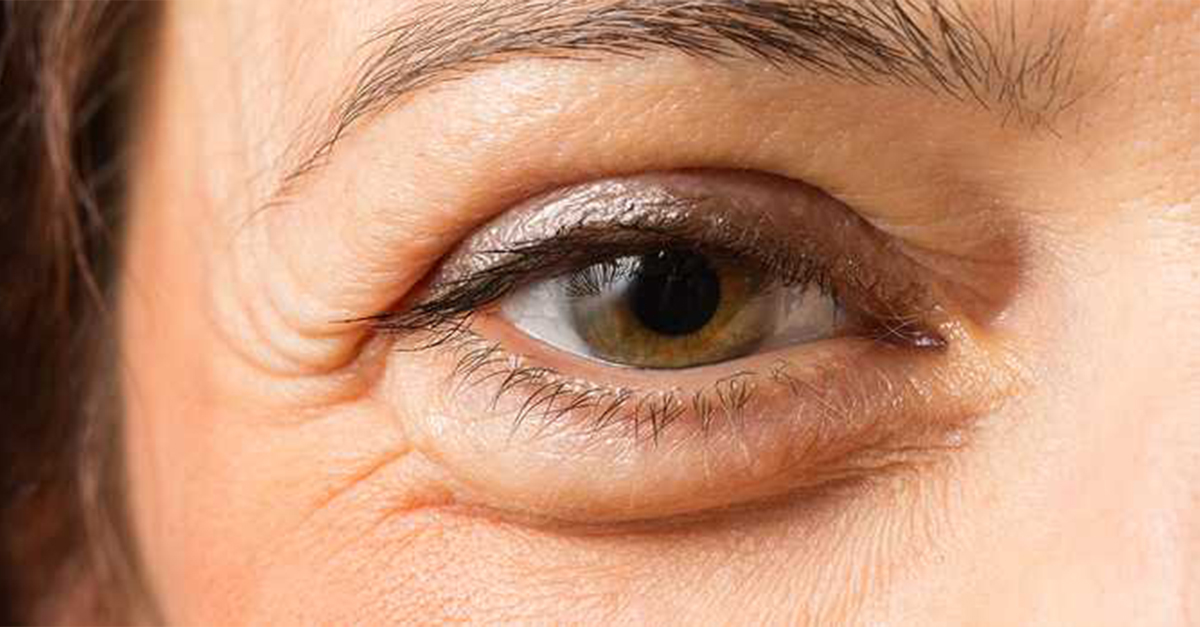Puffy Eyes / Eyelid Bags
Puffy Eyes / Eyelid Bags

What are Puffy eyes/ Lower lid bags?
Periorbital puffiness or Puffy eyes is a condition in which bag like swelling appears under the eyes. When fluid builds up in the thin layers of tissue surrounding your eyes, your eyes and eyelids can swell.
What are the symptoms of Puffy eyes?
- Saggy or loose skin under the eyes
- Dark circles around the eyes
- Eyes appear smaller
- Tired appearance
- Mild swelling

What Causes Puffy Eyes?
As you age, the tissue and muscles that support your eyelids start to weaken and lose elasticity. The skin may begin to sag and wrinkle, and fat that is normally confined to the area behind the eye (orbit) can move into the area below your eyes. Also, the space below your eyes can collect fluid, making the under-eye area appear puffy or swollen. Several factors cause or worsen this effect, including:
- Fluid retention, especially upon waking or after a salty meal
- Thyroid associated eye disease
- Lack of sleep
- Allergies
- Smoking
- Heredity - under-eye bags can run in families
Treatment options
If there are any underlying factors, these will be addressed first. Dr.Sneha will evaluate the reason for puffy eyes and discuss the treatment options best suitable to you. There are both surgical and non-surgical treatment modalities.
Non-surgical Treatment
- Laser or ultrasound assisted skin tightening
- Fillers , Botox
Surgical treatment
Lower lid blepharoplasty is one of the most effective and efficient ways to manage puffy lower eyelids. It may be performed from the skin side(Transcutaneous approach) or from the inner side of the eyelid(Transconjunctival approach). Dr.Sneha will evaluate and discuss with you which approach is most suitable to your case.
Skin approach/ Transcutaneous
Here the incision is made on the skin, just below the edge of the eyelid. The scar usually heals very well and is barely visible after a few months. This approach provides an opportunity to tighten the skin along with addressing the puffiness of eyelids.
Hidden/ Transconjunctival approach
This is often referred to as scarless surgery, as the scar is well hidden on the inner side of the eyelid and not visible at all. It is the procedure of choice for mild/ early puffiness, not associated with skin laxity and wrinkling.
What does surgery entail?
Dr.Sneha will discuss with you the type of anesthesia suitable to you, to ensure you are comfortable during surgery. It is usually done as a day case procedure and you can go home the very same day. Before surgery, some markings will be made on your face to guide surgery. Procedure itself may take anywhere between 1-3hrs and entails removing, redistributing and redraping the tissues, such that there is a smooth transition from the lower lid to the cheek, without leaving a bag or creating a hollow.
Dr.Sneha finds that most of her patients are comfortable and tolerate the procedure well.
What is the recovery time?
The lids are a very sensitive part of our body, so do expect swelling, bruising and mild discomfort after surgery. Most people are able to go about their day to day life comfortably, 48 hrs after the surgery. Stitches, if any, are removed in a week. Most of the healing is complete in about 10-14 days, by when you should be able to resume your work and social activities. Expect to see the final result of the surgery at about 6-8 weeks after surgery.
What are the potential complications?
In trained hands, Lower lid Blepharoplasty is a very successful procedure, with few and uncommon complications. Dr.Sneha has a lot of experience in these procedures, especially while working in the UK. She also ensures that reasonable and realistic outcomes are portrayed during consultation prior to surgery, so you understand what to expect before committing to the procedure. This contributes to her high patient satisfaction quotient. Having said that every procedure has a risk of complications, which include:
- Watering and discomfort in the eyes- this usually resolves a few days after surgery
- The area under the eye might look uneven
- Out turned eyelid/ ectropion- if excessive skin is remove from the lower lid, the eyes will not close adequately
- Scar becomes noticeable
